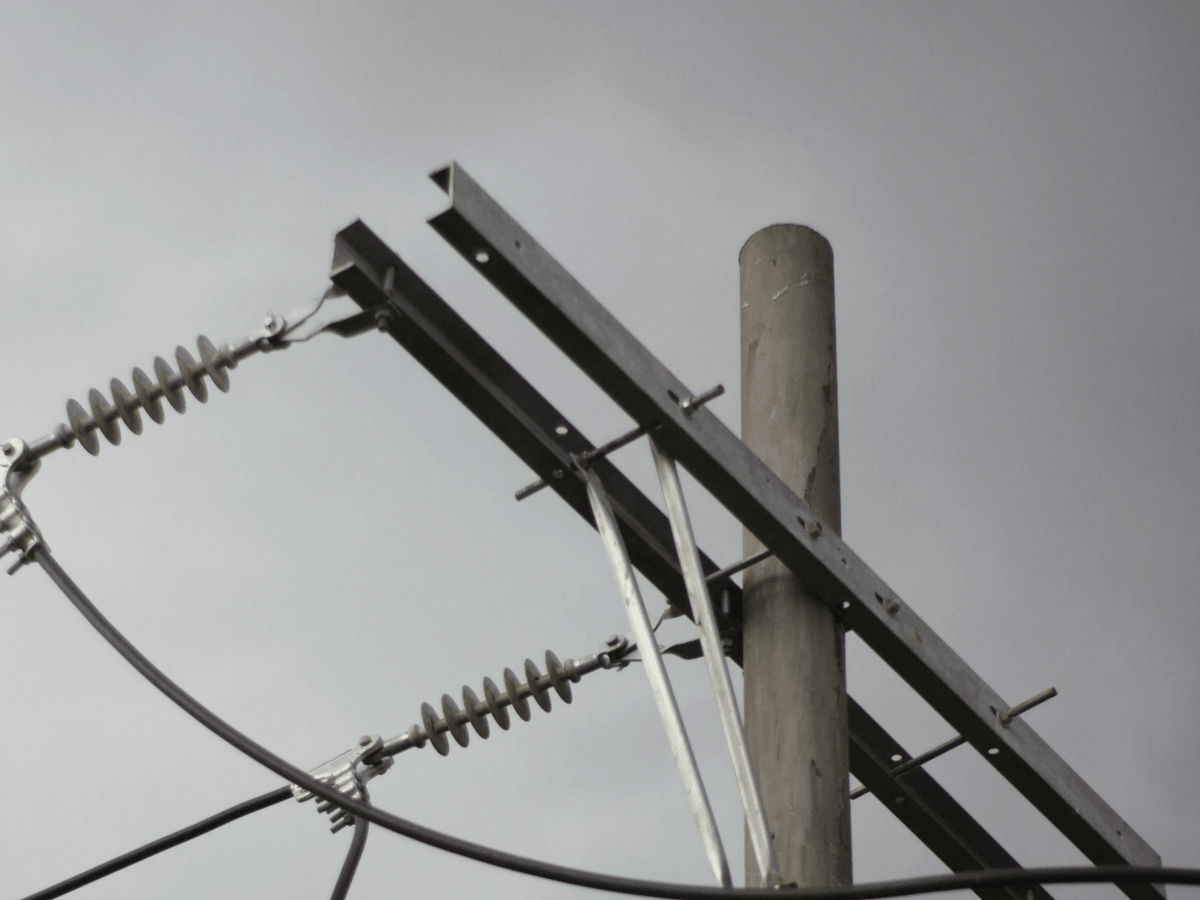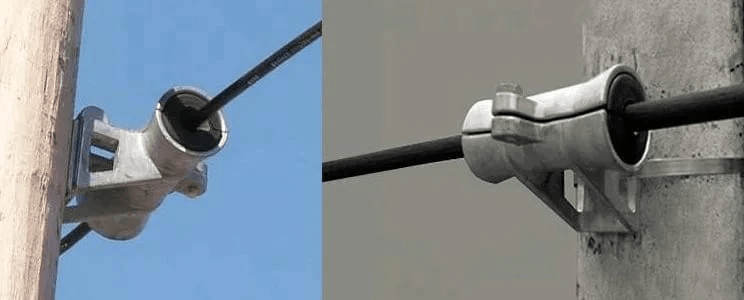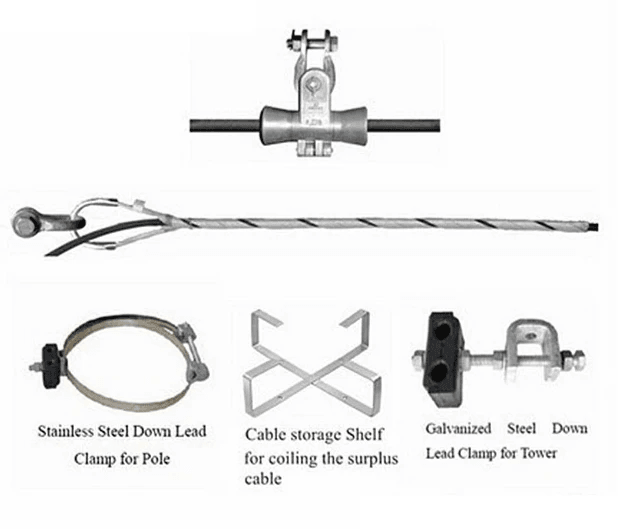Introduction
In the world of overhead power systems, understanding the intricacies of clevis transmission line hardware is essential for ensuring safety and reliability. These components, such as clevis links and Hot Line Links, play a crucial role in connecting various elements of overhead lines, allowing for efficient energy distribution. As technology evolves, so does the need for high-quality hardware solutions that can withstand the test of time and environmental challenges.
Understanding Clevis Transmission Line Hardware
Clevis transmission line hardware encompasses a range of fittings designed to secure and support electrical conductors in overhead power systems. Among these fittings, the clevis link serves as a pivotal connection point that allows for flexibility and movement while maintaining structural integrity. Additionally, Y-Clevis fittings provide unique advantages by enabling better alignment and load distribution across transmission lines.
Importance of Quality in Overhead Line Components
The importance of quality in overhead line components cannot be overstated; subpar materials or designs can lead to catastrophic failures, jeopardizing both infrastructure and safety. High-quality components like Overhead Transmission Line Adapters ensure optimal performance by reducing wear and tear on connections over time. Investing in superior products translates into fewer maintenance issues, lower operational costs, and enhanced reliability for electrical systems.
Spark Fittings: A Leader in Hardware Solutions
Their extensive range includes not only clevis links but also advanced solutions like armor rods tailored for specific applications. With a focus on material compatibility and customization options, Spark Fittings ensures that each component meets the unique demands of modern electrical infrastructure.
Overview of Clevis Transmission Line Hardware

In the world of overhead transmission lines, clevis links play a pivotal role in ensuring stability and reliability. These components serve as connectors between various hardware fittings, providing the necessary support and flexibility for power lines. Understanding clevis links is essential for anyone involved in the installation or maintenance of overhead line systems.
Definition and Purpose of Clevis Links
A clevis link is a type of fastener that connects two components, typically used in overhead transmission lines to create a secure joint between different hardware elements. The primary purpose of a clevis link is to allow for some degree of movement while maintaining structural integrity under varying loads. This flexibility is crucial in adapting to environmental changes, such as wind or thermal expansion, ensuring that the overhead transmission line remains functional and safe.
Types of Clevis Fittings for Overhead Lines
These include standard clevis fittings, which are widely used due to their versatility; Y-Clevis fittings, which offer enhanced load distribution; and specialized designs tailored for unique applications. Each type serves its purpose effectively but choosing the right fitting can significantly impact overall system performance.
Key Features of Hot Line Links
Hot Line Links are an essential component within the realm of clevis transmission line hardware designed specifically for energized lines. These fittings allow utility workers to connect or disconnect equipment without de-energizing the line, making maintenance operations safer and more efficient. Key features include robust insulation materials and secure locking mechanisms that ensure reliability even under high-voltage conditions.
The Role of Y-Clevis Fittings

What is a Y-Clevis Clevis?
A Y-Clevis clevis is a unique type of fitting shaped like the letter Y, allowing for versatile connections in overhead transmission lines. It serves as an intermediary component that connects conductors or other hardware to structures such as poles or towers. By utilizing this innovative design, engineers can achieve better alignment and load distribution across the line.
Benefits of Using Y-Clevis in Line Applications
The advantages of incorporating a Y-Clevis into your overhead transmission system are numerous. First, its design allows for greater flexibility when adjusting angles and positions, which can be crucial during installation or maintenance phases. Additionally, using a high-quality Y-Clevis clevis reduces stress on other components, prolonging their lifespan and enhancing overall system reliability.
Moreover, with its robust construction, the Y-Clevis fitting contributes significantly to safety by minimizing the risk of failure under heavy loads or adverse weather conditions. When paired with hot line links and overhead transmission line adapters, it creates a cohesive system that maximizes electrical performance while maintaining structural integrity.
Installation Considerations for Y-Clevis Fittings
Installing a Y-Clevis fitting may seem straightforward; however, there are key considerations to keep in mind for optimal results. First off, ensure that all components—including clevis links and adapters—are compatible and meet industry standards before beginning installation. Proper alignment during setup is crucial; misalignment can lead to undue stress on fittings and potential failures down the line.
It’s also important to follow manufacturer guidelines regarding torque specifications when securing connections with bolts or clamps; this will help maintain the integrity of your installation over time. Lastly, routine inspections should be part of your maintenance schedule to identify any wear or damage early on—after all, prevention is better than cure!
Essential Components: Overhead Transmission Line Adapters

These components serve as crucial connectors that facilitate the seamless integration of various hardware elements, including clevis links and Hot Line Links. Understanding the different types of adapters available and their benefits can significantly enhance the performance and longevity of your transmission line system.
Types of Overhead Transmission Line Adapters
Overhead transmission line adapters come in various forms, each designed for specific applications. Among these are standard Overhead Transmission Line Adapters, which are versatile and widely used in many configurations. Additionally, specialized adapters like Y-Clevis Clevis fittings offer unique advantages for certain installations, ensuring that each connection is both secure and efficient.
Another common type is the insulated adapter, which plays a critical role in maintaining safety while minimizing electrical interference. These insulated options are particularly valuable when working with live lines or in areas where electrical conductivity could pose risks. By selecting the right type of adapter, you can optimize your installation's reliability and effectiveness.
Advantages of Using High-Quality Adapters
Investing in high-quality overhead transmission line adapters pays off in numerous ways. First and foremost, superior materials ensure durability and resistance against environmental factors like moisture and temperature fluctuations—essential for maintaining long-term functionality. When using robust clevis links alongside high-quality adapters, you create a dependable system that withstands the test of time.
Moreover, premium-grade adapters often feature improved design elements such as enhanced load distribution capabilities or corrosion-resistant coatings that extend their lifespan further than cheaper alternatives would allow. This level of quality not only reduces maintenance costs but also minimizes downtime during repairs or replacements—an essential consideration for any utility company aiming to maintain service reliability.
Finally, high-quality Overhead Transmission Line Adapters contribute to overall system performance by ensuring optimal fitment between components like Y-Clevis Clevis fittings and other hardware elements. This seamless integration prevents issues such as misalignment or stress points that could lead to premature wear or failure over time.
How Adapters Enhance System Performance
The right overhead transmission line adapter can significantly elevate your entire system's performance by providing stability and flexibility where it's needed most. For instance, when paired with clevis links or Hot Line Links, these adapters help distribute loads evenly across connections, reducing stress on individual components during operation. This balanced approach not only enhances safety but also prolongs the life expectancy of all involved hardware.
Additionally, effective use of Y-Clevis Clevis fittings alongside appropriate adapters allows for easier adjustments during installation or maintenance tasks without compromising structural integrity—an invaluable trait when working at height or under challenging conditions! The adaptability offered by these configurations ensures that your transmission line remains responsive to changing demands over time.
Ultimately, investing in quality overhead transmission line adapters translates directly into improved operational efficiency for utility companies managing extensive networks of power lines. By prioritizing top-notch components throughout your installations—including clevis links—you're setting up a solid foundation for future growth while minimizing potential headaches down the road!
Spark Fittings: Innovating with Armor Rods

In the world of overhead line hardware, Spark Fittings stands out for its commitment to innovation, particularly with their armor rods. These essential components play a critical role in enhancing the durability and performance of transmission lines. By focusing on advanced materials and design, Spark ensures that their armor rods meet the rigorous demands of modern electrical infrastructure.
Materials Used in Armor Rods
Armor rods from Spark Fittings are crafted from a variety of high-quality materials designed to withstand environmental stressors. Commonly used materials include aluminum, fiberglass, and composite options that provide strength without adding excessive weight to the system. This careful selection of materials not only extends the life of the clevis link but also enhances overall system reliability.
The Importance of Material Compatibility
When it comes to overhead transmission line components like Y-Clevis Clevis and Hot Line Links, material compatibility is paramount. Using incompatible materials can lead to corrosion, reduced strength, and ultimately system failure—something no utility company can afford. Spark Fittings takes this concern seriously by ensuring that all components work harmoniously together, providing peace of mind for engineers and operators alike.
Customization Options Offered by Spark Fittings
One size does not fit all in the world of transmission line hardware; that's why Spark Fittings offers extensive customization options for their armor rods. Whether it's adapting dimensions or selecting specific material blends, customers can tailor solutions to fit their unique needs perfectly. This flexibility not only enhances performance but also integrates seamlessly with other components like Overhead Transmission Line Adapters and Y-Clevis fittings.
Installation and Maintenance Tips

When it comes to ensuring the longevity and reliability of your transmission line hardware, proper installation and maintenance cannot be overlooked. Clevis links, Hot Line Links, Y-Clevis Clevis fittings, and Overhead Transmission Line Adapters all play crucial roles in a successful overhead line system. By following best practices and maintaining these components effectively, you can enhance system performance while minimizing potential issues.
Best Practices for Installing Clevis Links
Installing clevis links requires precision and care to ensure that they function correctly under load. First, always check the manufacturer's specifications for torque settings and installation methods specific to your clevis link type. Additionally, when working with Y-Clevis fittings or Hot Line Links, make sure to use the appropriate tools to avoid damaging the components during installation.
It's also essential to inspect each component before installation; look for any signs of wear or damage that could compromise performance later on. When attaching clevis links or adapters, ensure they are seated properly in their respective fittings to prevent slippage or misalignment during operation. Lastly, always follow safety protocols when working at heights or near live lines; your well-being is as important as the integrity of the hardware.
Routine Maintenance for Optimal Performance
Routine maintenance is vital for keeping your overhead transmission line components in top shape. Regularly inspect clevis links and Hot Line Links for signs of corrosion or wear; early detection can save you from costly repairs down the line. It's also a good idea to clean these components periodically—removing dirt and debris can help maintain their functionality.
For Overhead Transmission Line Adapters, check for secure connections regularly; loose adapters can lead to increased stress on other hardware parts. If you notice any unusual movement or noise during operation, it may be time for a detailed inspection of your Y-Clevis fittings as well as other related components. Implementing a scheduled maintenance plan will not only extend the lifespan of your equipment but also boost overall system reliability.
Troubleshooting Common Issues with Hardware Fittings
Even with careful installation and regular maintenance, issues may arise with your transmission line hardware fittings over time. One common problem is misalignment between clevis links and their corresponding attachments; this can lead to premature wear or failure if not addressed promptly. If you notice excessive vibration or movement in any component—especially around Y-Clevis fittings—it's crucial to investigate further.
Another issue could stem from improper torque settings during installation; if a clevis link isn’t tightened correctly, it may loosen over time under load conditions. Always refer back to manufacturer guidelines when troubleshooting such problems; they often provide valuable insights into specific solutions tailored for their products like Hot Line Links or Overhead Transmission Line Adapters. Lastly, don’t hesitate to consult with experts if you're facing persistent issues—sometimes an outside perspective can identify problems that are easy to overlook.
Conclusion
In the ever-evolving landscape of transmission line hardware, the future looks promising with advancements in materials and design. Innovations such as the clevis link, Hot Line Link, and Y-Clevis Clevis are paving the way for more efficient and reliable overhead line systems. As technology progresses, we can expect even greater improvements in safety and performance for overhead transmission lines.
The Future of Transmission Line Hardware
The future of transmission line hardware is likely to be driven by a focus on sustainability and efficiency. Emerging materials will enhance the durability of components like Overhead Transmission Line Adapters while reducing environmental impact. Moreover, with increasing demand for renewable energy sources, robust solutions like clevis links will play a crucial role in supporting new infrastructure developments.
Why Choose Spark Fittings for Your Projects
Their commitment to producing high-quality Y-Clevis Clevis fittings ensures that you receive reliable products designed specifically for overhead applications. Additionally, their extensive range of adapters and custom solutions allows you to tailor your hardware needs to fit any project requirement seamlessly.
Key Takeaways on Clevis Transmission Line Hardware
Understanding clevis transmission line hardware is essential for ensuring optimal performance in overhead systems. The versatility of components like Hot Line Links and Overhead Transmission Line Adapters can significantly enhance system reliability while reducing maintenance costs over time. By choosing trusted manufacturers like Spark Fittings, you ensure that your projects benefit from high-quality materials and innovative designs crucial for long-term success.

